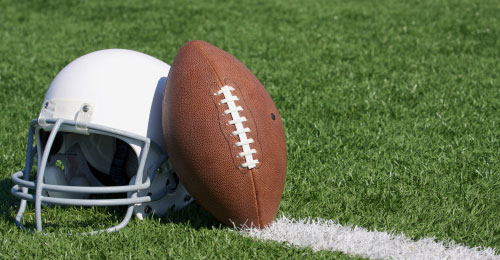In 1920, The National Football League (NFL) was created, and ever since it has been America’s most loved sport. NFL Games have the highest average attendance rate than any other sport in the world. The game is loved, the game is played, and the NFL profits from every aspect of the sport in excess of 13 Billion a year and predicted to be 25 Billion by 2025.
Since the creation of the NFL, every athlete has provided the NFL with the talent they needed. Athletes have shed their blood, sweat, and tears for the love of the game and their fans entertainment. The athletes are the reason the NFL exists, and every player displays their dedication every time they step on the field. Which begs the question, how does the NFL show their dedication to the athletes? Most say, money. As in any other employment agreement, services and skills provided to the employer are exchanged for money. If the job in question is dangerous, it is the employers duty to provide a warning so that the employees know the risk they are taking by accepting the position. The NFL does pay their athletes (employees) for their services and skills, but they were never warned about the injuries that could result later in life.
In some ways, this is situation is similar to the Tobacco Case, or the many Asbestos Cases. People did their job, and their employer later found out that the employees could be harmed from the work, thus had to compensate their employees for the damage done to their bodies. Sounds simple, you get harmed at work and your work pays for the injury. It sounds simple, but the NFL could not grasp this concept, and unlike the cases mentioned above the NFL knew of the injuries that their employees were going to suffer in the future.
My good friend, Dr. Bennett Omalu, discovered what the National Football League had already known-Football can cause severe damage to the brain which can affect the player later on in life. Right away the NFL came into defense mode by denying the medical evidence and attempting to discredit Dr. Omalu’s work . This is where I came in. I could not stand to see anyone attacking a man whom I considered a very close friend, so I began to research. After years of research, I had caught them keeping a secret, and I had caught them in a web of lies. Eventually my research turned into a lawsuit against the NFL. The first of its kind on behalf of over a 100 former players. When the truth became public, when they could no longer sustain the charade, they NFL finally admitted the connection between football and brain damage… or maybe they didn’t.
Truth be told, these facts are black and white, the NFL has never had their athlete’s best interests in mind, especially the retired player.
Now that everyone knows the truth, the National Football League has to help their players right?
Isn’t it easy to register and become part of the lawsuit?
They have to pay the retired player who has medical support, right?
If these questions were true, my job would be over.
Instead, the NFL has promoted their willingness to work with each and every player. They have repeatedly stated that registering is simple, it only takes thirty seconds and that players don’t need a lawyer.
This is where the black and white statement comes into play yet again: the NFL has never had their athlete’s best interests in mind. If becoming qualified is so easy, why is the NFL putting so many roadblocks in the way of a player qualifying, such as a 54 page claim package and a 17 page diagnosing physician certification? Why are they making it so difficult for their player to receive the money they deserve? This is a simple concept the NFL understands. They very well know the less help a player has, the less people advocating for them, the easier it is for a player to not qualify. If a player does not understand what to do, or how to maneuver around the numerous roadblocks the NFL has placed-they won’t qualify and the NFL will be able to retain their funds.
This brings me to the very first question asked: Since when did the NFL have their Players Back? The answer is simple- Never.

